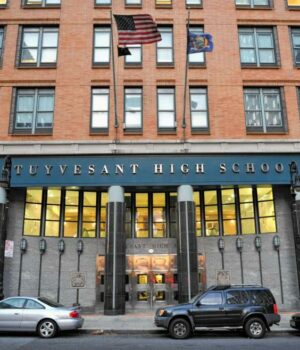21st century racial segregation is not something you want to wake up to trending on twitter or spoken about on the morning news, but it is unfortunately the stark reality of the current New York City public school systems, and most public school systems nationwide. According to the UCLA Civil Rights Project, New York City’s system is actually one of the most segregated in the US, and it was recently reported that only about 7 out of 300 admitted students to specialized high schools such as Stuyvesant and LaGuardia, and only 9% of all applicants to NYC specialized high schools are black. So many intelligent POC are not considered for admission to selective public schools: just a few years ago, only 4% of all middle schools (or 21 total middle schools in NYC) had students that had applied to New York City’s specialized high schools. Clearly, the implementation of diversity regulations are long overdue as high schools are simply not supporting black scholars the way they should be.
But how did this problem originate? Segregation and racial inequality have unfortunately existed for centuries, and it has taken a long time for America to recognize the moral depravity of that inequality and attempt to amend it. There are also other contributing factors – housing segregation, redlining, and disorganization within the NYC public school system are some of many systematic faults. However, this problem is not only rooted in housing segregation: most students in New York City do not go to school where they are “zoned” or where they live, so it likely has more to do with the way selective high schools’ practice admissions, which is exactly what New York City’s School Chancellor Richard Carranza and Mayor Bill de Blasio are are attempting to fix – though arguably, Richard Carranza has taken a much more demanding stance on the issue than the Mayor. In fact, Carranza has rightly begun referring to this problem as segregation, especially since white parents on the Upper West side began making angry remarks about upcoming movements to try to intervene with the balance and distribution of students in NYC’s public school system.
The Mayor has taken action against this racial segregation, recently proposing a bill to attempt to revamp the admissions process at eight of the specialized New York City public schools. His bill would mean that the Top 10% of students of all of NYC’s 600 public schools would have to be given a place at one of the specialized high schools. This would be pretty revolutionary for creating more ethnic diversity in public schools and a more balanced student body, especially as the lack of diversity definitely has something to do with the fact that only 9% of students who apply to specialized New York city high schools are black.
But what constitutes “diversity,” anyway? Such a broad term needs a more exact, numerical definition when it comes to us representing it and manifesting it within high schools. As apart of the Mayor’s plan, 45% of students filling places at specialized high schools would have to be black or latinx, and 62% of total students would have to go to female students. This does seem like a great way to fix the representation issue; however, some people have expressed concern that this proposal would dramatically decrease the number of Asian students’ places. Where as Asian students currently make up 62% of places at specialized high schools, that percentage may be cut in half.
Of course, simple diversity regulations may be a great way to get the ball rolling, but some may argue that they mask the problem rather than fix the institutionalized racial segregation that has been in place for so long. Racial segregation causes systematic inequality, and systematic inequality keeps students from achieving. Dividing racial groups in this way will inevitably create differences in education between high schools, which is what Brown vs. Board of Education set out to dismantle. To me, such simple regulations seem way overdue. The reality is that congress people and lawmakers are only just picking up on this now – and why now? There is no reason for this delay. This not only has been a long standing issue for so many schools, affecting so many students’ lives and academic careers for many years, but it’s a pretty obvious problem, too; for example, LaGuardia high school largely consists of Asian and white students, where as MLK High school across the street from LaGuardia is mainly hispanic and black. The fact that two high schools opposite from one another have such widely different student bodies under the same public school system and in exactly the same area of New York City is ridiculous.
Educational inequality has definitely been a theme in 2019, and from college admissions scandals to diversity question marks in high schools, it’s very upsetting that educational equality is still a problem we’re trying to eradicate today. We position ourselves as the greatest nation on Earth, yet we’re still contradicting ourselves and the promises of prosperity we claim to fulfill.
We owe it our children and future generations to do better.





